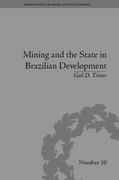Solvethefollowingquestions:
Answer all questions.,
Duration and Convexity
Your research department reports continuously compounded interest rates as
Maturity (Years) 0.5, 1.0, 1.5, 2.0
Interest Rate (%) 1.00, 1.50, 2.00, 2.00
(a) Use these rates to compute the prices Pz(0,1) and Pz(0,2) of one- and two-year zero coupon bonds, and the price Pc(0,2) of a two-year, 3% coupon bond. Coupons are paid semi-annually, and the face value of all bonds is 100.
(b) Obtain the coupon bond's duration and convexity.
(c) Suppose that the monthly changes in the interest rates have a mean of zero and a standard deviation of 0.5%. Obtain the monthly 95% Value at Risk and Expected Shortfall on the coupon bond.
(d) Construct a hedge portfolio of 1 coupon bond and k one-year zero coupon bonds that has zero duration. What is the value of k? What is the convexity of the hedge portfolio?
(e) Construct a hedge portfolio of 1 coupon bond, and k1 one-year zero coupon bonds and k2 two-year zero coupon bonds, that has zero duration and convexity. What are the values of k1 and k2?
(f) Suppose that the yield curve shifts upward with dr = 1%. Recalculate Pc(0,2), Pz(0,1) and Pz(0,2) and use this to calculate the change in the values of the hedge portfolios constructed in (d) and (e). Comment on the result.
For all the questions below select the appropriate answer: a:- When an economy is at its equilibrium level of output. we know that: 1'}.- oonsumers' purchases of goods equals the total value of the goods produced by the economy. ?.'.'- planned aggregate expenditure is to equal the value of the aggregate output produced by the economy. actual aggregate spending by the private sector equals the value of the output produced by the economy. rms will not hold any inventories. b} Aggregate Rammditure AF. Cot-Ia Real GDP and income Consider the aggregate expenditure fu nation and equilibrium real GDP for a closed economy with no government as illustrated. In terms of this diagram, 6: tall in consumption at every level of income, and the corresponding increase in saving will: change the slope ofthe investment function but leave equilibrium income unchanged. "; increase investment. shi the AE function up and increase equilibrium income. 12 increase the slope of the consumption function and increase equilibrium income. 4."; leave investment unchanged but lower consumption and the equilibrium income. c) In the aggregate expenditure - income model of an economy with constant prices: The multiplier = '|.i(slope of HE). C:- The multiplier is less than '1 because MP0 is a positive fraction. 1').- The multiplier = 1K1 - slope otAE). -._.'I The multiplier always = 1. d) A closed economy without a government sector is described by the following equations: Consumption: C = 100 + 0.5Y Investment: I = 50 The equilibrium level of real income (Y) for this economy is: O 200 O 300 O 150 O unknown because the information given is incomplete e) Other things remaining the same, if households suddenly decide to save more at each level of income, then the consumption function will: O make a parallel shift downward as autonomous consumption expenditure falls. O remain unchanged but the savings function will shift downward. O become steeper because the marginal propensity to consume (MPC) falls. O become less steep because the marginal propensity to save (MPS) rises.expenditure. Consider an economy characterized by the following 13 equations: ng61b C = 500 + 0.75Y + 0.05W I = 150 where C is desired consumption, I is desired invest- ment, W is household wealth, and Y is national income. a. Suppose wealth is constant at W = 10 000. Draw the aggregate expenditure function on a scale diagram along with the 45 line. What is the equi- librium level of national income? b. What is the marginal propensity to spend in this economy? c. What is the value of the simple multiplier? d. Using your answer from part (c), what would be the change in equilibrium national income if desired investment increased to 250? Show this in your diagram. e. Begin with the new equilibrium level of national income from part (d). Now suppose household wealth increases from 10 000 to 15 000. What happens to the AE function and by how much does national income change









